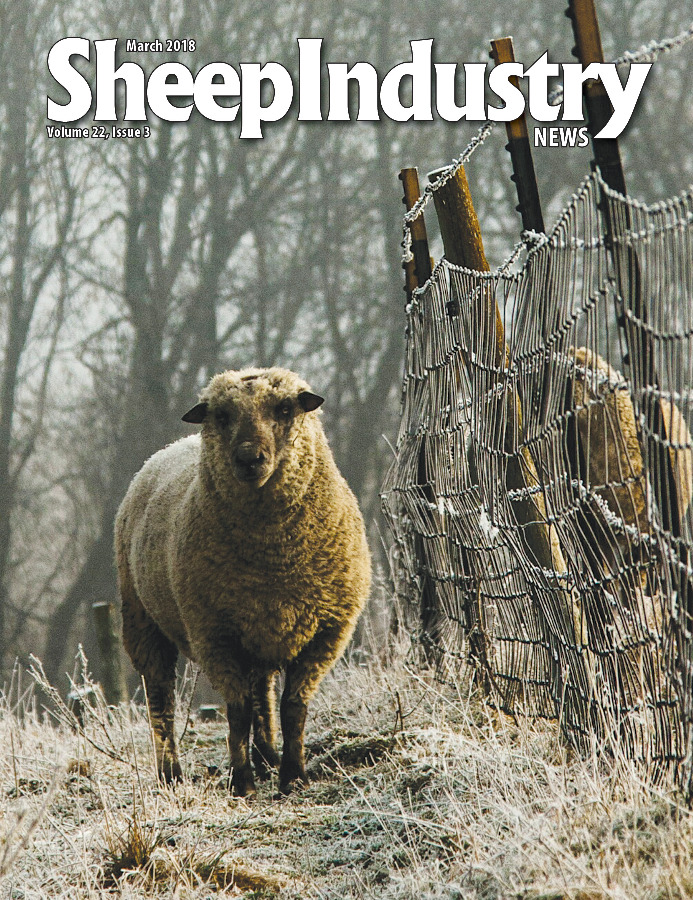
- March 2018
- President’s Notes
- Jerry King Cartoon
- Convention: Sheep Producers Share Concerns with USDA
- Convention: Industry Leaders Recognized
- Convention: MIWW Celebrates 70 Years
- Convention: American Wool Uses Technology
- Convention: Nourish With Lamb Spreads Message
- Convention: PERC Discusses Possible FMD Outbreak
- Convention: Kangols Top Guard Dog Breed
- Convention: Genetic Stakeholders Understand Value of Data
- Convention: Sheep Disease Updates
- Convention: Resource Management Eyes Progress
- Convention: Young Entrepreneurs
- Electronic Grading Approved at Superior Farms
- ALB Picks Denver as Next Target Market
- Wool is Popular at Outdoor Show
- Sheep Inventory Flat in 2017
- Feedlot Report Available
- Young Entrepreneur: Jake Kerr
- Sec. Perdue Names ALB Appointees
- Three Appointed to Sheep Center
- Around the States
- Market Report
- The Last Word
American Wool Uses Technology to Develop Even More Versatility
A fabric as old as time, it would be easy to think that the world would have long ago exhausted all of wool’s possible uses. And yet, there seems to be no stopping the miracle fiber.
Just as wool prices have been a source of pride and joy for sheep producers in the past year, wool continues to be a fiber of choice for both manufacturers and consumers. From outdoor retailers to the United States military, everyone is buying American wool. More importantly, they’re all constantly looking for new ways to use American wool.
This was the general theme of two days of meetings for the American Wool Council and the Wool Roundtable during the ASI Annual Convention in San Antonio.
ASI Wool Consultant Roy Kettlewell offered presentations on the mercerization process he helped develop. The fiber-smoothing process has been carried out in tests at Chargeurs, and makes fine wool feel like cashmere.
“Wool has scales, so we can make them thinner and the fiber becomes smoother,” Kettlewell said in explaining the mercerization process. “We can make it feel like cashmere and look like silk.”
Benefits of the process include: softness and luxury; next-to-skin comfort; machine washability; and vibrant colors.
End products from mercerized wool include socks, suitings, base-layer garments and even paint rollers. In March 2017, a successful trial was carried out using wools of 23 and 25 microns.
Kettlewell also discussed wool in a variety of forms that many might not be familiar with, such as boiled, mottled, devore, vintage and crinkled. Each has its own distinct advantages and serves a specific purpose within the textile industry.
Blends with other fabrics are also generating new possibilities for using wool in a variety of applications.
Despite a renewed interest in wool in the past decade, there’s still a need to continue to introduce the fiber to textile designers around the world. Many new designers coming out of college are unfamiliar with wool, and therefore must be educated about the fiber’s endless possibilities.
“We need to inspire a new generation to work with wool,” Kettlewell said in conclusion.
ASI Wool Consultant Goetz Giebel is working to do just that from his home base in Germany. In his presentation to the Wool Council, he said he’s aiming to initiate new projects for the use of American wool, as well as taking part in case studies with young designers for the realization of a concept garment.
“The aim is to bring American wool properties to the market, media and students,” he said.
Of course, American wool has to be harvested and classed before it can make its way into the market. ASI Raw Wool Services Consultant Lisa Surber, Ph.D., has been tasked with developing programs that will improve the quality of the American wool clip.
Wool shearing and classing schools have been popular and often filled to capacity in recent years, but helping those students make the jump to an advanced level has proven to be a challenge. Apprentice programs and advanced schools are possible solutions.
ASI is also in the process of examining options for developing a responsible wool production program to address animal welfare concerns.

